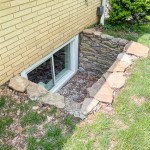How To Seal Basement Floor
A basement is an underground room that is typically used for storage or utility purposes. It can be a great place to store items that you don’t use regularly, such as seasonal decorations or extra furniture. However, basements can also be damp and musty, which can damage your belongings and create an unpleasant environment. If you want to seal your basement floor, there are a few things you will need to do.
1. Clean the Floor
The first step is to clean the floor thoroughly. This will remove any dirt, dust, or debris that could interfere with the sealant. You can use a broom, a vacuum cleaner, or a mop to clean the floor. Once the floor is clean, allow it to dry completely.
2. Repair Any Cracks or Holes
Once the floor is clean, you need to repair any cracks or holes. You can do this with a patching compound or a hydraulic cement. Make sure to follow the manufacturer’s instructions for the product you are using.
3. Apply a Primer
A primer will help the sealant to adhere to the floor. Apply the primer to the floor using a paint roller or a brush. Allow the primer to dry completely before applying the sealant.
4. Apply the Sealant
Once the primer is dry, you can apply the sealant. You can use a paint roller, a brush, or a sprayer to apply the sealant. Make sure to apply the sealant in a thin, even coat. Allow the sealant to dry completely before using the floor.
5. Maintain the Sealant
Once the sealant is dry, it is important to maintain it. You can do this by sweeping or mopping the floor regularly. You should also inspect the sealant for any cracks or damage. If you find any damage, you should repair it immediately.
Here are some additional tips for sealing a basement floor:
- Use a high-quality sealant. A good sealant will be waterproof, durable, and resistant to chemicals.
- Follow the manufacturer’s instructions carefully. This will ensure that you properly apply the sealant and get the best results.
- Ventilate the area when applying the sealant. The fumes from the sealant can be harmful if inhaled.
- Allow the sealant to dry completely before using the floor. This will ensure that the sealant has properly cured and is providing the best protection.
- Inspect the sealant regularly for any cracks or damage. If you find any damage, you should repair it immediately.
By following these steps, you can seal your basement floor and protect it from moisture and damage.

How To Seal A Concrete Garage Floor With Pva Part 1 Youtube

Colored Concrete Sealer How To Guide

Paint And Your Waterproofed Basement Floors Tom S Waterproofing Inc

Alternative Finishes For Interior Concrete Floors Decor

What To Know About Waterproofing A Concrete Basement Floor

How To Prepare Concrete For Sealers And Coatings V Seal Commercial Residential Blog

How To Waterproof Your Basement True Value

Underslab Retrofits Sealing Slabs Waterproof Magazine

Waterproofing Basement Floor Slabs And Walls Waterproof Magazine

How To Stain Concrete Basement Floor Diy Guide
See Also








